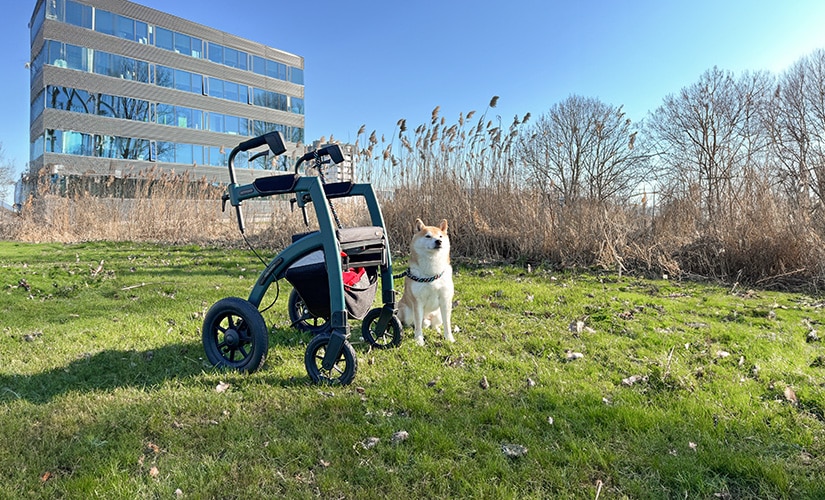Petting a dog for just 10 minutes can result in a significant reduction in the stress hormone cortisol, according to findings by scientists at Washington State University. While this highlights a glimpse of the benefits that an animal can bring, it is just one of the reasons it makes sense to integrate a furry friend into treatment. For children with disabilities, animal-assisted therapy (AAT) can present a wide range of both physical and mental health benefits, including helping to stay active and providing support to those using mobility aids. From the value of animal-assisted therapy and what it entails to how having a pet can serve as a continuation of the benefits at home, animals have the potential to enhance life in more ways than one.
The scope of animal-assisted therapy
According to Psychology Today, animal-assisted therapy is defined as “a therapeutic intervention that incorporates animals, such as horses, dogs, cats, and birds, into the treatment plan.” This involves taking part in therapeutic activities, which are outlined in a treatment plan that includes goals, objectives, and “the expectation of identifiable progress toward the treatment goals.” This type of therapy can take many forms, depending on the patient, animal, and goals for treatment.
For children who experience a disability, United Disabilities Services (UDS) notes that animal-assisted therapy has become increasingly popular. Children who can benefit from this type of therapy include those with cerebral palsy, muscular dystrophy, and traumatic brain injuries. Among the wide range of benefits, animal-assisted therapy can help reduce or alleviate pain, hone fine motor skills, improve independent or assisted movement, and improve joint movement. AAT can also promote increased levels of exercise, thus proving useful in a number of different scenarios. For example, a child using a rollator may have a dog present when learning how to use the walker feature – not only can a dog ease the anxiety of trying something new, but a furry friend can help a child feel less alone while toning down feelings of frustration.
According to the Peninsula Childhood Disability Research Unit (PenCRU), equine or horse-assisted therapy claims to enhance muscle tone, balance, and co-ordination via the child’s responses to the horse’s shape and movement. “The riding position astride the horse stretches hips and legs,” states research published in May of 2014, which also notes that the warmth from the horse may reduce pain associated with stretching. This is known as ‘hippotherapy,’ according to the UDS, which utilizes a horse’s natural movement in order to guide the rider’s body in a way that emulates human walking. The goal of hippotherapy involves reacting to the horse’s movement, which is noted to improve neurological and physical functions. However, therapeutic horseback riding, on the other hand, “focuses on building a bond between horse and rider,” with UDS noting that participants learn riding skills coupled with rehabilitative purposes.
Exploring the mental health advantages
AAT can also bring a range of emotional benefits to the table when used for children with disabilities. Not only can animal-assisted therapy help enhance self-esteem and self-confidence, increase empathy, and promote greater emotional stability. It can also work to increase feelings of security, happiness, and hope. The presence of an animal, for most, prompts the body to release serotonin, prolactin, and oxytocin. According to UCLA Health, these hormones work to generate a relaxation and stress-reducing response. “Releasing these ‘happy hormones’ also helps lower anxiety, so people will relax during their treatment or therapy. They also experience less loneliness while in the hospital,” a Husson University post points out. This can make a world of difference to children who may feel alone or who are new to their disability or therapy. By providing comfort and a distraction, children participating in animal-assisted therapy can feel more comfortable during their treatment.
Developing a connection with a pet
In addition to its many benefits, AAT will allow your child to experience the joy of spending time with an animal, which can lead to getting a pet, whether it be a therapy dog or otherwise. According to the American Kennel Club (AKC), kids can benefit from having a pet in multiple ways. In addition to lessening stress, several researchers found that children often name their pet when asked whom they would come to with a problem. “Pets can make people feel unconditionally accepted, whereas fellow humans will judge and may criticize,” noted the report. Additionally, playing with a pet raises levels of serotonin and dopamine (thus calming the mind and boosting mood), not to mention the fact that having a pet can teach responsibility.
Having a dog at home can be a great way to stay active. For example, daily walks will not only cater to Fido’s needs, but will work to build strength when using a rollator walker.
Animal-assisted therapy can make a world of difference for kids with disabilities, from providing a distraction and comfort to boosting mood and even helping to reduce pain. In addition to such benefits, however, AAT can also promote an active lifestyle, effectively supporting mobility and the use of Rollators.
Briana Hilton – Former occupational therapist specialized in pediatric disabilities
